Exhibition brings creative way to connect to excavated relics, artifacts and people, Deng Zhangyu reports in Changsha.
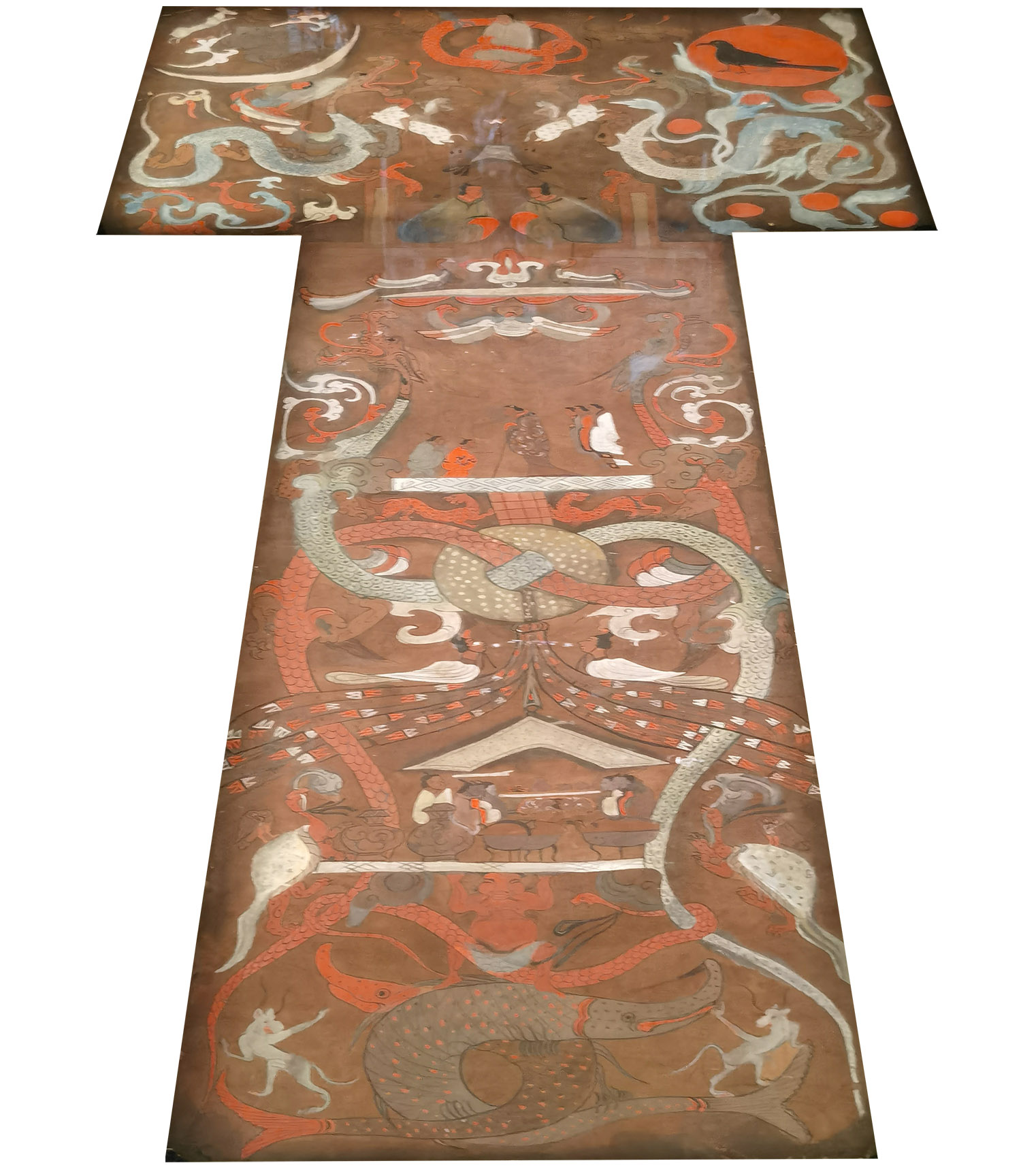
Standing under a giant LED dome, visitors to Hunan Museum in Changsha, Central China's Hunan province, immerse themselves in a journey of the immortals dominated by mythical creatures imagined by people from about 2,100 years ago.
In the underground world, two colossal whales swim in dark waters while a towering giant hoists the entire earthly plane. Above, in the human realm, mourners gather for solemn burial rites, praying for the departed to transcend into celestial beings. Meanwhile, in heaven, mythical guardians stand vigilant, illuminating the path forward.
READ MORE: Ancient Shu shines in Shanghai
Welcome to the digital exhibition, The Art of Life: Multimedia Exhibition of Mawangdui Han Culture, where you can experience the vivid imaginations and artistic expressions regarding the universe and life of people from the Western Han Dynasty (206 BC-AD 24). It's an innovative, digital endeavor by Hunan Museum to showcase its archaeological findings of the Mawangdui Han Tombs, where 3,000 pieces of treasured artifacts and a well-preserved female body dating back over 2 millennia were unearthed in 1972.Recognized as one of the most significant archaeological discoveries in China in the 20th century, it has attracted widespread attention both domestically and internationally.
"The digital exhibition tells ancient stories by employing the language of contemporary art," says Duan Xiaoming, director of Hunan Museum. "I'm a little nervous about whether visitors will like it or not. It's rare for a museum to present an archaeological exhibition in such a way."
The exhibition, opened on June 8 and running until next February, uses technologies such as naked-eye 3D and holographic projections to offer an immersive experience and a visual feast inspired by artifacts found in the tomb of the Marquis Dai's wife, Xin Zhui, whose un-mummified body was so well-preserved that medical experts were able to perform a full checkup, gynecological examination and autopsy. Many exquisite items, such as embroidered silk, lacquerware, musical instruments and wooden figures, were also unearthed from the tomb.
The digital exhibition features patterns and art designs inspired by Xin Zhui's tomb, but does not display any actual relics. In three years, the museum has created about 1,800 3D digital models of the artifacts and taken nearly 60,000 photos of the relics.
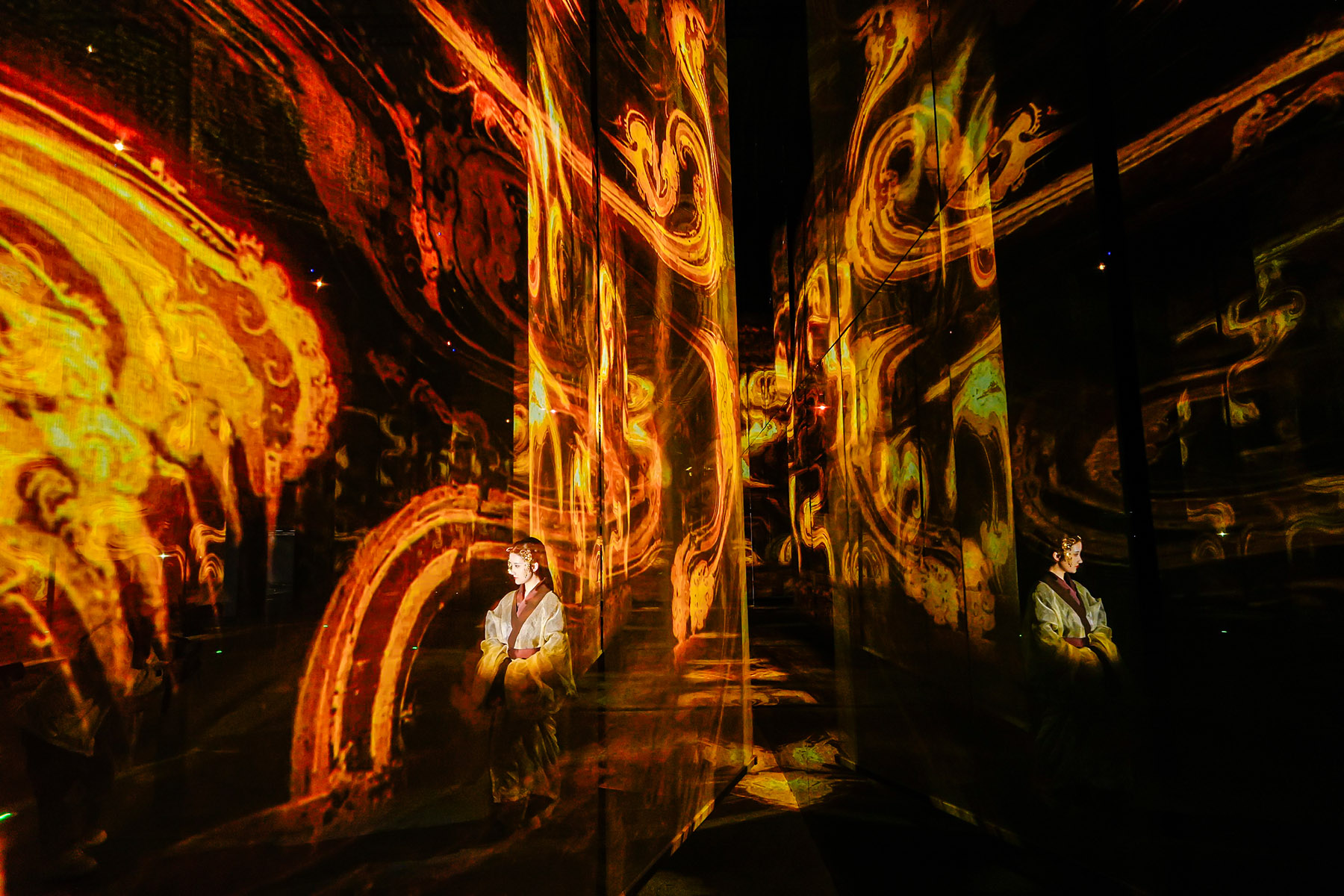

The exhibition consists of three sections. Space and Time features a digital layout of Xin Zhui's tomb, a central coffin chamber surrounded by four compartments and all the items buried in her tomb; Ying and Yang focuses on the imaginative patterns painted on the four nested lacquer coffins; and the Life section re-creates the painting depicted on a T-shaped silk banner laid on the surface of the innermost coffin.
"I think it's an exploration for a museum's future archaeological exhibitions. Transforming from viewing real relics to an immersive, theatrical and virtual experience, digital exhibitions can break the boundaries of time and space," Duan says. "It's easy for such exhibitions to tour across the world."
The exhibition took three years to prepare and is co-organized with the Digital Library of China and US' Massachusetts-based Harvard FAS CAMlab, an art team established by Eugene Y. Wang, an art professor at Harvard University.
"Life is a question that humanity has been pondering for thousands of years. The Han Dynasty (206 BC-AD 220) people's concept of the cosmos and life, to some extent, are from the same perspective as those in the 21st century," says Wang, explaining why they chose "life" as the theme of the show.
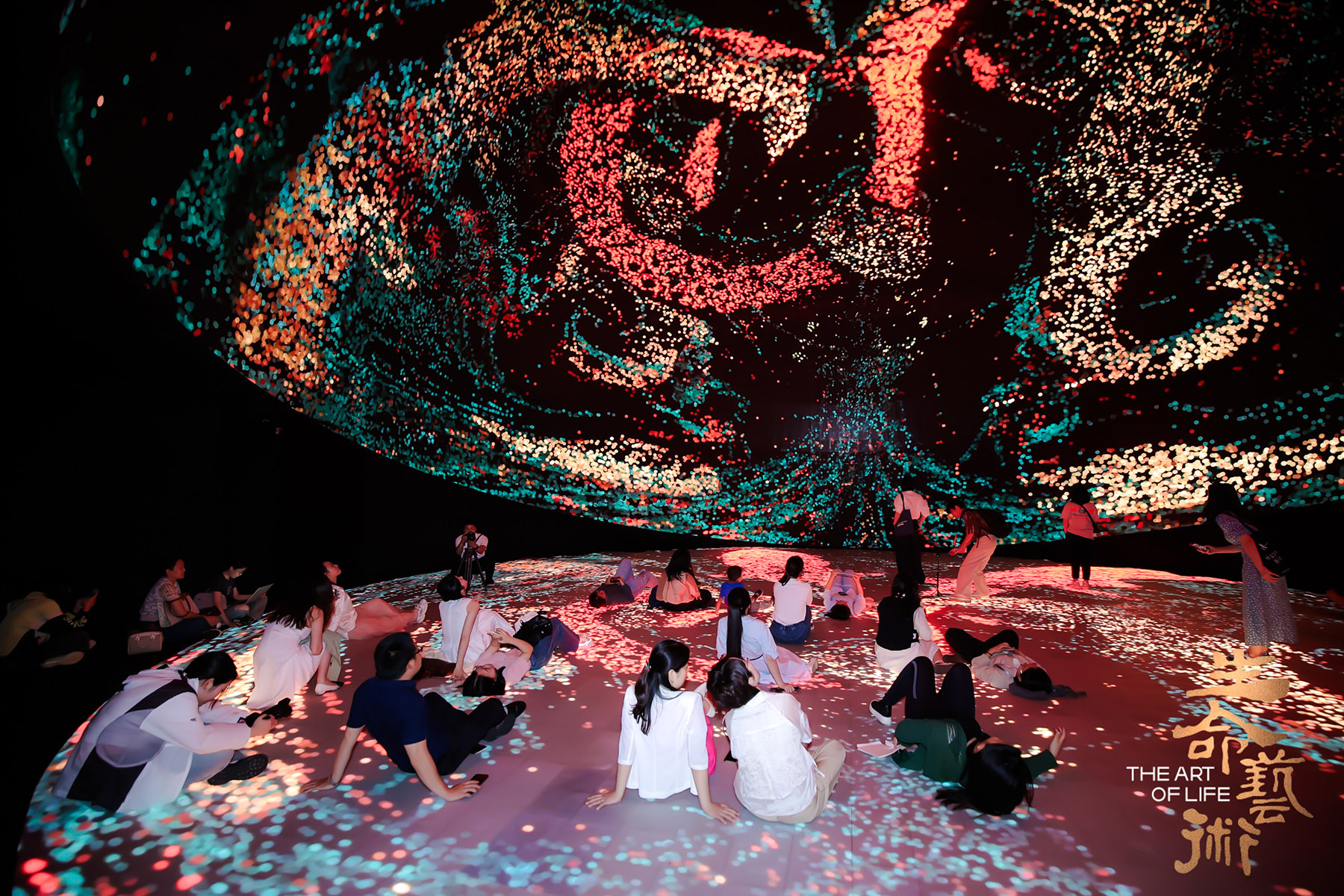
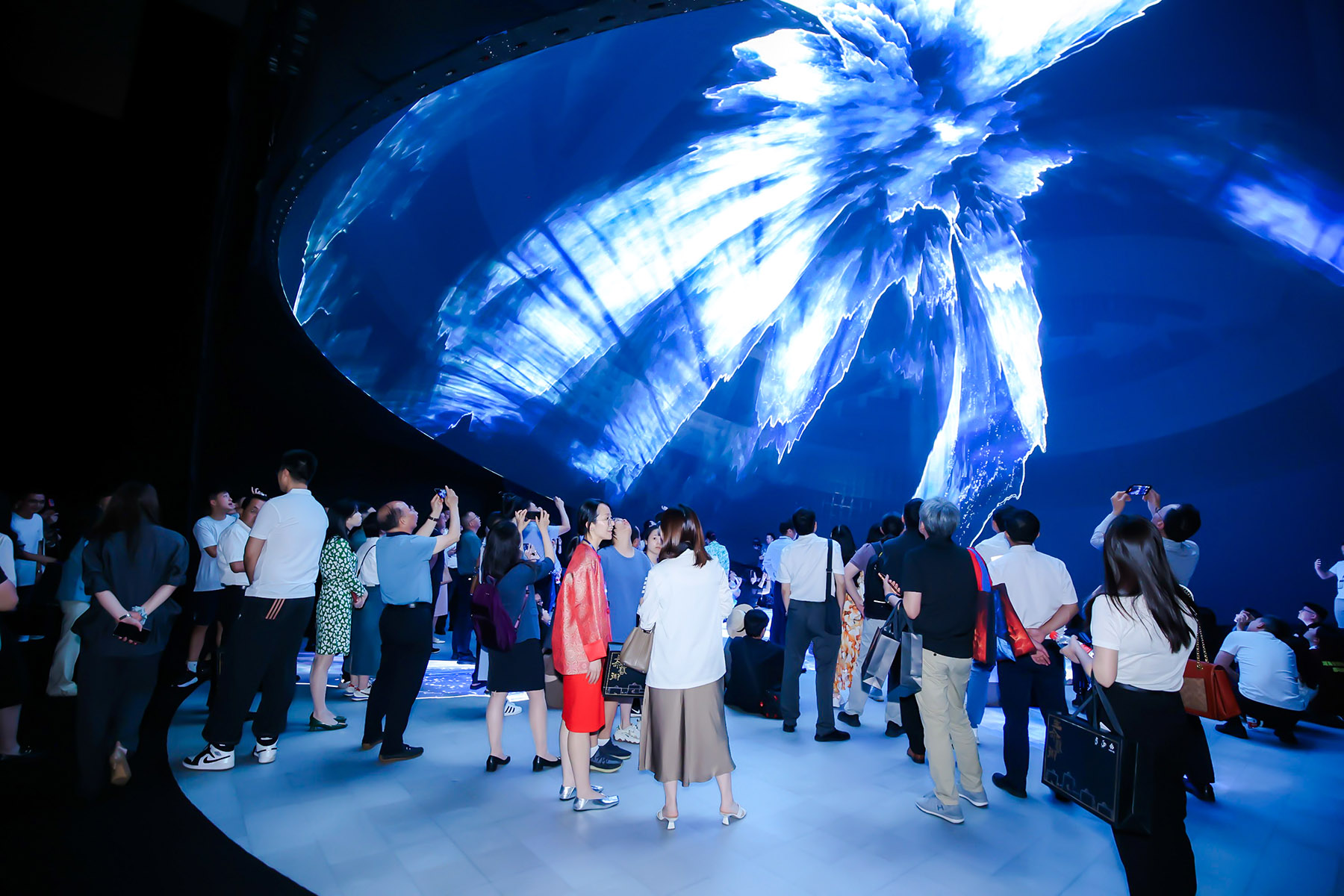
The tomb of Xin Zhui offers a glimpse into the funerary practices and cosmological beliefs of the Han Dynasty. The elaborate burial goods and the design of the tombs reflect the importance of the afterlife and the desire for immortality.
Apart from the painting on the T-shaped funeral banner mapping out an ascending journey to heaven, symbols, patterns and paintings on the four nested coffins also show vivid imagination regarding a safe passage to the afterlife. The painting on the third coffin used bright colors to depict the sun, mountains and auspicious animals, such as the dragon, tiger and deer. It illustrates the journey of a soul traveling through darkness into the eternal realm. The innermost coffin is adorned with feathers, symbolizing the hope that they would aid the deceased in ascending to immortality.
The exhibition used all these elements and turned them into a visual feast, "an artistic and abstract way to tell the stories of the Han Dynasty tombs", says Lyu Chenchen, associate director of Harvard FAS CAMlab.
"It is a distillation of the Western Han Dynasty's cosmology and view of life. We aim to enable audiences to look beyond the surface and engage more deeply with the conceptual world of early Chinese civilization, to glimpse the spiritual world of the people of that era and their artistic imaginations," Lyu says.
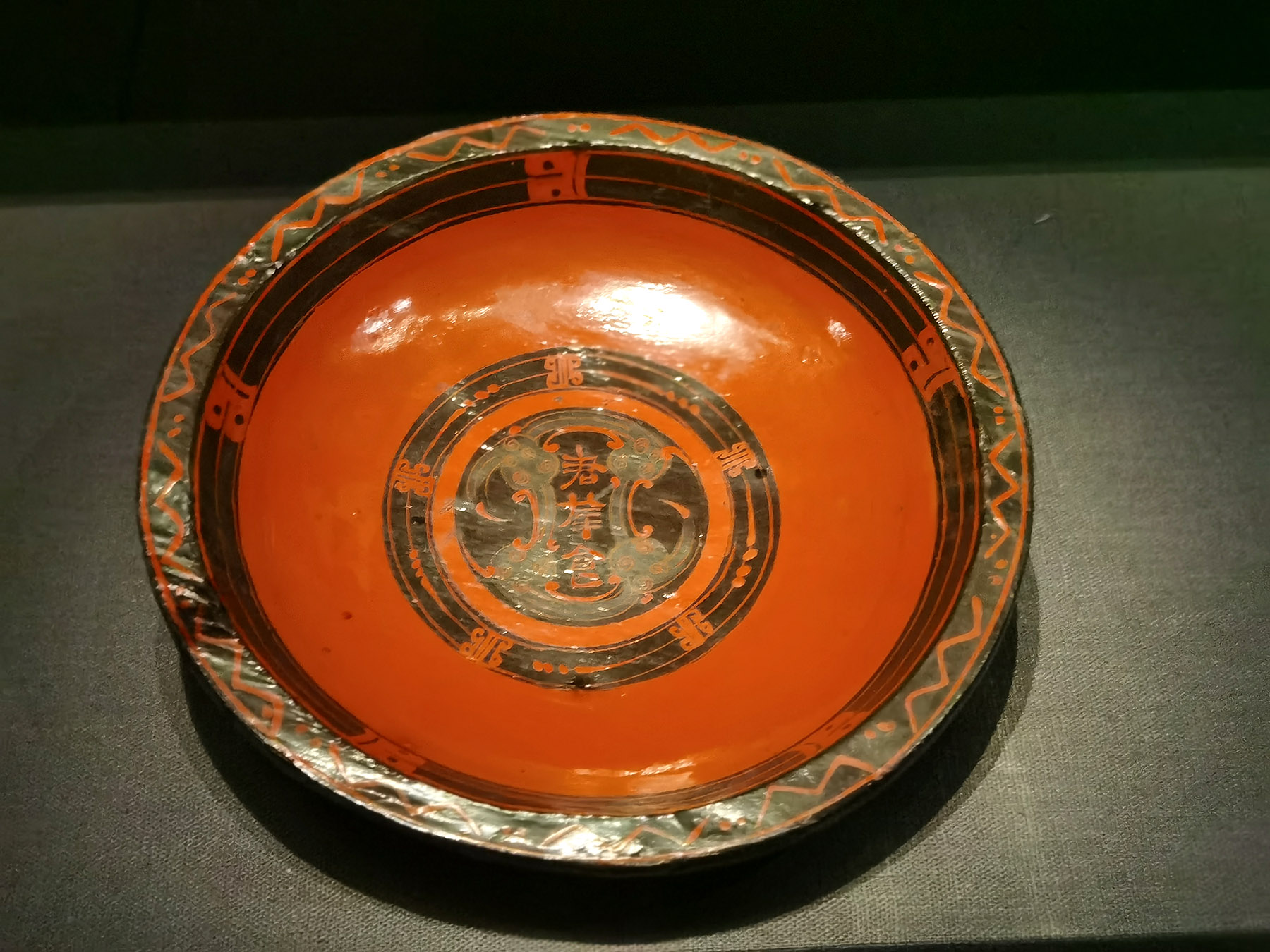
The Han Dynasty was an era of grand tomb construction. Nobles began building their tombs while they were still alive, making it one of the most significant undertakings of their lifetimes. Even though people knew living forever was just a fantasy, their strong belief in eternal life and an everlasting soul kept them determined, as they saw "death" as just another form of "life" and believed life continued in a different way.
Since the excavation of the Mawangdui Han Tombs in the early 1970s, the rich relics found within have been exhibited both in and out of China, attracting large numbers of visitors. With the opening of the digital exhibition, Duan says that it is more convenient for the museum to hold exhibitions outside China without the complicated transportation of the actual relics. A global tour is currently being planned.
He adds that it will also help them to attract more young visitors. "We used the traditional way to exhibit our relics for years. It's time for us to change and employ the way adored by the younger generation," Duan says.
ALSO READ: Glimpses of the past link us to the future
Jia Yan, an art professor at Peking University in Beijing, came to the show on its opening day with her 14-year-old daughter. They went to the third floor of the museum first, where the relics of the tombs are displayed. However, her daughter found it a little bit difficult to engage, failing to feel the connection with the artifacts that her mother hoped for.
When the daughter entered the digital exhibition on the first floor, she immediately responded and told Jia that everything in the digital show related to the artifacts she viewed on the third floor. When Jia asked her daughter whether she would like to go back to take another look at the real relics, the teenager quickly said, "Yes."
"The show provides us with another way to present relic-related exhibitions. The three sections of the digital exhibition are like a typical three-act drama. It brings people from a state of shock back to one of tranquility or delight," Jia says.
Contact the writer at dengzhangyu@chinadaily.com.cn


